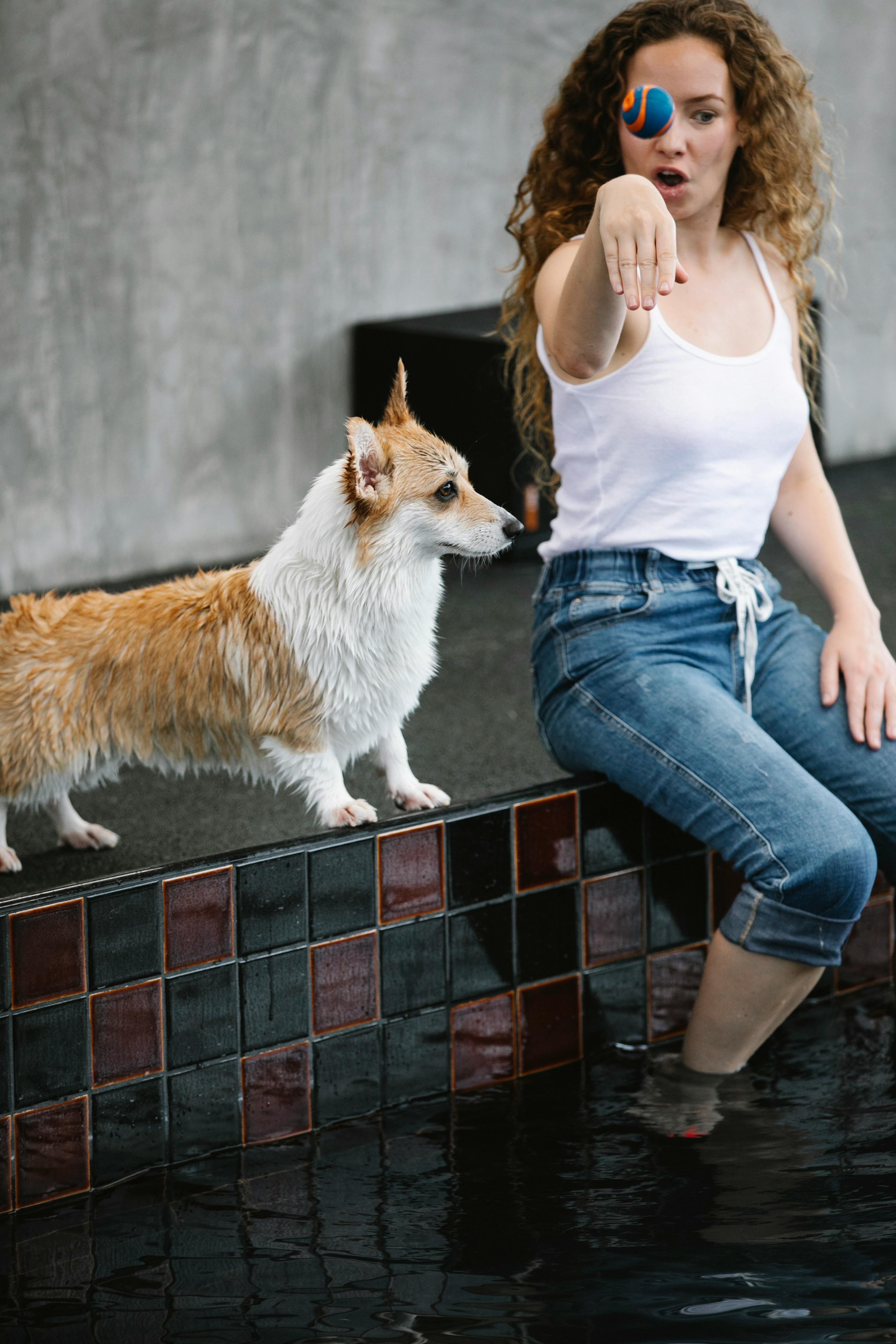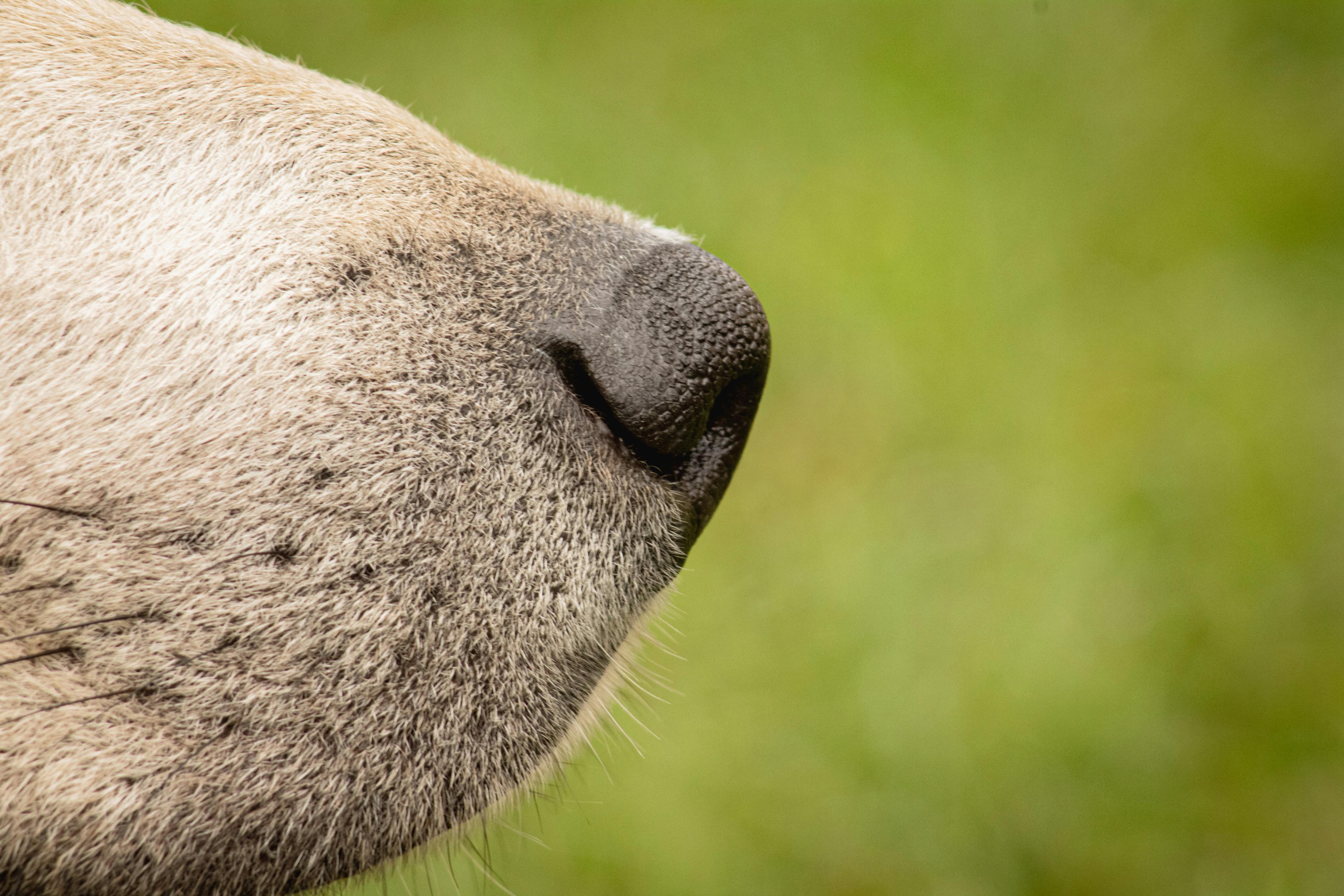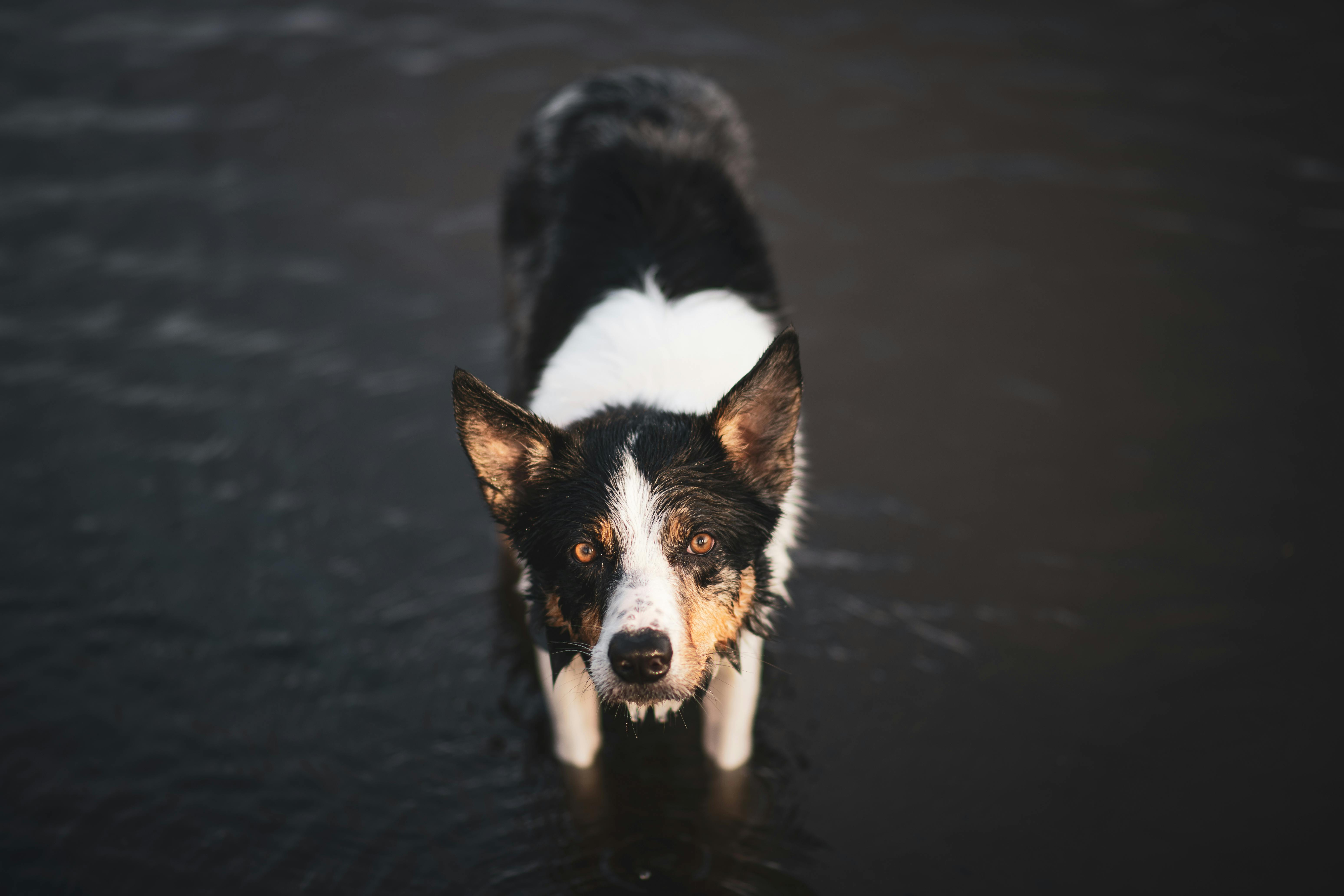Have you ever wondered why do dogs have wet noses? This common question is not just a quirky observation but holds fascinating insights into your furry friend’s health and behavior. Dogs’ noses are often moist, and this unique characteristic serves several important purposes. But what makes these wet noses so special? Could it be a sign of their emotional state, or does it play a role in their incredible sense of smell? In this article, we will explore the surprising reasons behind this intriguing phenomenon. From the physiological functions of a dog’s nose to how it aids in their overall well-being, we will dive deep into this topic. You’ll discover why your dog’s nose is not just a cute feature but a vital part of their sensory toolkit! Are you curious about how your canine companion’s wet nose impacts their interactions with the world? Join us as we uncover the secrets behind those adorable, damp noses that greet you every day! Understanding these fascinating facts can enhance your bond with your pet and ensure their health. So, let’s find out together why do dogs have wet noses and what it means for them!
The Science Behind Why Dogs Have Wet Noses: What Every Pet Owner Should Know

Dogs are considered man’s best friend for many reasons, but one peculiar feature that often catches pet owners’ attention is their wet noses. You ever wonder why do dogs have wet noses? It’s not just a quirky trait, but it actually has a scientific basis behind it. Knowing the reasons can help every pet owner better understand their furry companions and their unique biology.
The Basics of a Dog’s Nose
To start, a dog’s nose serves multiple purposes that are vital for their survival and well-being. It is packed with a wealth of sensory receptors, making it incredibly sensitive to smells. In fact, dogs have up to 300 million scent receptors in their noses, compared to about 5 million in humans. This means that dogs can detect odors at incredibly low concentrations, which is why they are often used in search and rescue missions, drug detection, and even medical alert services.
Why Do Dogs Have Wet Noses?
So, why do dogs have wet noses? There are several reasons behind this fascinating feature:
Temperature Regulation: Just like humans sweat to cool down, dogs use their noses to regulate body temperature. A wet nose can help evaporate moisture and cool them off.
Enhanced Scent Detection: A moist surface helps trap scent particles better. When a dog’s nose is wet, it can absorb those scents more effectively. This helps them identify and differentiate smells, which is crucial for their survival instincts.
Health Indicator: The moisture level of a dog’s nose can be an indicator of their health. A dry nose might signal dehydration or illness, while a wet nose is generally a sign of a healthy and happy pup.
Communication Tool: Dogs often use their noses to communicate with other dogs. A wet nose can signify friendliness and curiosity. When they greet other dogs or humans, they often use their noses to gather information about the other being.
Historical Context of Dog Noses
Interestingly, the evolution of a dog’s nose can be traced back to their ancestors. Early wolves relied heavily on their sense of smell for hunting and social interactions. Over thousands of years of domestication, dogs have retained this amazing feature. Humans began to breed dogs not just for companionship but also for their specific skills, such as tracking or herding, which emphasized their olfactory abilities.
Fun Facts About Dog Noses
- Dogs’ noses come in various shapes and sizes depending on the breed. For example, Greyhounds have long, narrow noses, while Bulldogs have shorter, broader ones.
- The color of a dog’s nose can vary widely, from black to pink, and even spotted. This can be influenced by breed and genetics.
- Dogs can even “sweat” through their noses! Although they primarily cool off through panting, the moisture in their noses still plays a role in temperature regulation.
Practical Examples
So how does knowing this about your dog’s nose help you as a pet owner? Here are some practical tips:
- Monitor Health: If you notice a sudden change in your dog’s nose moisture, such as becoming excessively dry, it may be time for a vet visit.
- Improve Training: Understanding that dogs use their noses to explore can help in training. You might use scent-based games to engage their natural instincts.
- Hydration: Ensure your dog is well-hydrated, especially during hot weather. This can help keep their nose moist and healthy.
Comparison with Other Animals
When comparing dogs to other pets, like cats, their noses serve different functions. Cats also have sensitive noses, but they do not rely on scent in the same way dogs do. Dogs’ noses are built for sniffing out a wide range of scents, while cats are more visual hunters.
Reasons for Dry Noses
There are times when a dog’s nose might be dry. Some common reasons include:
- Dehydration
- Allergies
- Environmental factors such as heat or wind
- Illness
If your dog’s nose remains dry for an extended period, it could be worth consulting a vet.
Every pet owner should know about the science behind why dogs have wet noses. Understanding the significance of this unique feature can deepen the bond you share with your furry friend. After all, their noses are not just cute; they are essential tools that help them navigate the world around them. So, the next time you give your pup a scratch behind the ears, don’t forget to appreciate that wet little nose!
Top 5 Surprising Benefits of a Dog’s Wet Nose: More Than Just an Adorable Feature

When you think about dogs, many people might picture their wagging tails and playful barks. But have you ever stopped to wonder why dogs have wet noses? It’s not just a cute feature that makes them endearing; there’s a lot more going on beneath the surface. In fact, the wetness of a dog’s nose is linked to several surprising benefits that can impact their health and behavior. Let’s explore the top five unexpected advantages of a dog’s wet nose and discover the reasons behind this fascinating trait.
1. Enhanced Sense of Smell
Dogs are known for their incredible sense of smell, which is 10,000 to 100,000 times more sensitive than humans. A wet nose actually plays a vital role in this superpower. The moisture on a dog’s nose helps capture scent particles from the air, which makes it easier for their olfactory receptors to detect and identify different smells. This is why dogs are often used in search and rescue operations or to sniff out drugs and explosives.
- Wet noses help absorb scent particles.
- More moisture means better detection of scents.
- Key to hunting and tracking behaviors.
2. Regulation of Body Temperature
You might not know this, but a dog’s wet nose helps them cool down. Dogs don’t sweat like humans do; they primarily regulate their temperature through panting. However, the moisture on their noses also contributes to thermoregulation. When a dog’s nose is wet, it helps dissipate heat more effectively, allowing them to stay cooler in warmer conditions.
- Wet noses can help lower body temperature.
- Essential during hot weather or after exercise.
- Aids in preventing overheating.
3. Communication Tool
Dogs are social animals, and their wet noses serve as a unique form of communication. When a dog nudges you with their nose, it’s often a signal of affection or a request for attention. This behavior might seem trivial, but it’s an important part of how dogs express themselves. Their sense of smell is so powerful that they can gather a wealth of information about other dogs and humans through a simple sniff.
- Nosing can indicate love or desire for interaction.
- Helps them learn about other animals and humans.
- Part of their socialization skills.
4. Sign of Health and Wellness
A wet nose is often considered a sign of a healthy dog. While it’s not a definitive measure of health, a moist nose can indicate that your dog is hydrated and feeling well. On the contrary, if a dog’s nose is dry and warm, it may be a sign of illness or dehydration. Regularly checking your dog’s nose can help you monitor their health status and catch potential issues early.
- A moist nose generally suggests good health.
- Dry or warm noses may indicate problems.
- Important for pet owners to observe.
5. Better Bonding Experience
Having a wet nose can also enhance the bonding experience between dogs and their owners. When you pet your dog and feel that cool, damp nose, it can create a sense of connection. Dogs often nuzzle their noses against their owners as a way of showing trust and affection. This physical interaction can lead to the release of oxytocin, also known as the “love hormone,” which strengthens the bond between you and your pet.
- Nose-to-nose contact promotes bonding.
- Encourages emotional connection.
- Oxytocin helps build trust and affection.
Quick Facts About Dogs’ Wet Noses
- Dogs have about 300 million olfactory receptors in their noses.
- The wetness can help them detect differences in temperature.
- Dogs can be trained to recognize specific scents, thanks to their wet noses.
Fun Comparisons
Wet Nose vs. Dry Nose:
- Wet Nose: Typically good sign of health, aids in smelling, helps in cooling.
- Dry Nose: May indicate dehydration or illness but not definitive alone.
Wet Nose vs. Other Animals:
- Cats: Often have dry noses, but can still smell well.
- Elephants: Also have wet noses, which aid in their sense of smell.
In summary, the wet nose of a dog is more than just an adorable feature; it serves multiple purposes that can significantly affect their health and behavior. From enhancing their remarkable sense of smell to playing a role in temperature regulation and communication, there’s a lot more than meets the eye. Understanding these benefits can help dog owners appreciate their furry friends even more and provide better care. So, next time you see your dog’s wet nose, you can think about all the amazing things it does!
How a Wet Nose Helps Dogs Sense the World: The Fascinating Role of Canine Smell

Dogs are more than just man’s best friend; they are incredible creatures with amazing abilities. One of the most fascinating things about dogs is their sense of smell. But have you ever wondered, why do dogs have wet noses? This question lead us to explore the unique and surprising reasons behind their wet noses and how it helps them interact with the world.
The Science Behind a Dog’s Sense of Smell
Dogs have an extraordinary sense of smell, which is believed to be anywhere from 10,000 to 100,000 times more sensitive than that of humans. Their noses have around 300 million scent receptors compared to a human’s mere 5 million. And this is where the wetness comes into play.
A wet nose helps dogs smell better. When a dog’s nose is moist, it captures scent particles more effectively. This is because moisture in the air helps the scent molecules stick, increasing their ability to detect smells. Isn’t that fascinating?
The Role of Nasal Mucus
The wetness of a dog’s nose is largely due to nasal mucus. This mucus does several things:
- Increases scent detection: As mentioned, the moisture captures scent particles.
- Helps with cooling: Dogs don’t sweat like humans do. Instead, they rely on panting and the evaporation of moisture from their noses to cool down.
- Filters out particles: The mucus also works as a filter, trapping dust and other particles, which helps to keep the nasal passages clear.
Why Are Dog Noses Wet?
Now, let’s dig deeper into the reasons why do dogs have wet noses. There’s a few explanations, and they vary in complexity:
Physiological Adaptation: Dogs have evolved to have wet noses as a survival mechanism. The wetness enhances their sense of smell, which is vital for hunting, tracking, and finding food.
Health Indicator: A wet nose is often a sign of a healthy dog. When dogs are sick or stressed, their noses may become dry. However, this is not a definitive health measure; other factors can also play a role.
Temperature Regulation: As mentioned, a wet nose helps regulate a dog’s body temperature. It is a form of thermoregulation, similar to how humans sweat.
Social Interaction: Dogs communicate through scent. A wet nose aids them in picking up pheromones and other scents that convey information about other animals or even humans.
Fun Facts About Dog Noses
Here’s a few interesting tidbits about dog noses that you might not know:
Unique Nose Prints: Just like human fingerprints, every dog has a unique nose print. This could potentially be used for identification.
Dogs Can Smell Emotions: Studies show that dogs can even detect human emotions through scent. They can sense when a person is happy or anxious.
Scent Discrimination: Dogs can differentiate between various scents and can even be trained to identify specific smells, such as drugs or explosives.
Comparing Dog and Human Noses
Here’s a quick comparison between dog noses and human noses:
| Feature | Dog Nose | Human Nose |
|---|---|---|
| Scent Receptors | About 300 million | About 5 million |
| Sensitivity | 10,000 to 100,000 times more | Standard human sensitivity |
| Wetness | Generally wet and moist | Usually dry |
| Purpose | Hunting, tracking, communication | Breathing, filtering air |
Practical Examples of Canine Smell
Dogs use their incredible sense of smell in many practical ways:
- Search and Rescue: Dogs can find missing persons in disaster situations through scent.
- Medical Detection: Some dogs are trained to detect diseases such as cancer or diabetes through scent.
- Detection Work: Law enforcement uses dogs to sniff out drugs, explosives, and even currency.
Understanding the importance of a dog’s wet nose sheds light on just how remarkable these animals are. Their ability to smell is not just a party trick; it’s a crucial part of how they interact with their environment, communicate with other animals, and even help humans in various tasks.
So next time you see a dog with a wet nose, remember the many reasons behind it. It’s not just cute; it’s a key part of what makes dogs so special in our lives.
Wet Nose, Happy Pup: Understanding the Connection Between Canine Health and Moisture

Wet noses and happy pups are something most dog lovers are familiar with. But have you ever stopped to ponder why do dogs have wet noses? It’s a curious question, and the answer goes beyond just the surface level of canine cuteness. Understanding the relationship between a dog’s health and moisture can also provide insight into their overall well-being. Let’s dive into this topic and discover the surprising reasons behind those moist, cold noses.
The Science Behind Wet Noses
A dog’s nose is not just for sniffing; it plays a crucial role in their health. Here’s why they tend to be wet:
- Moisture Regulation: Dogs often lick their noses to keep them moist, which helps with their sense of smell. A wet nose can absorb scent particles better than a dry one.
- Temperature Control: Dogs, unlike humans, do not sweat. They regulate body temperature through panting and the moisture on their noses. The evaporation of moisture from their noses can help cool them down.
- Health Indicator: A dog’s nose can be an indicator of their health. A warm, dry nose might indicate a fever, while a wet nose is often a sign that the dog is healthy.
Why Are Some Noses Wetter Than Others?
Different breeds of dogs can have varying degrees of nose moisture. For instance, some breeds such as Bloodhounds and Basset Hounds have notoriously wet noses, while others, like Bulldogs, may have drier noses. Factors that influence how wet a dog’s nose is include:
- Breed Differences: Some breeds are predisposed to having wetter noses. For example, hounds have a greater number of scent receptors and often have more moisture.
- Environmental Conditions: Weather plays a part too. Humid weather can lead to wetter noses, while dry, hot conditions can dry them out.
- Health Conditions: Certain health issues may affect nose moisture. For example, dehydration can lead to a dryer nose.
How to Keep Your Dog’s Nose Healthy
Maintaining your pup’s nose health is important. Here are a few tips on how to keep those noses wet and happy:
- Hydration: Make sure your dog has constant access to fresh water. Dehydration can lead to a dry nose.
- Balanced Diet: A nutritious diet can improve overall health, including skin and nose moisture.
- Regular Vet Visits: Regular check-ups can help catch any health issues early, including those that may affect the nose.
Fun Facts About Dog Noses
Did you know that a dog’s nose print is as unique as a human fingerprint? Here’s a few more interesting facts:
- Scent Receptors: Dogs have about 300 million scent receptors, compared to humans who have about 5 million.
- Temperature Sensitivity: A dog’s nose can sense changes in temperature and humidity, making them excellent at detecting weather changes.
- Nose Color: The color of a dog’s nose can vary widely, with some being pink, black, or even spotted.
Comparing Dog Noses to Other Animals
Dogs are not the only creatures with wet noses. Let’s see how their noses compare to those of other animals:
| Animal | Number of Scent Receptors | Wet Nose Functionality |
|---|---|---|
| Dogs | 300 million | Excellent for smelling |
| Cats | 50-80 million | Good, but less than dogs |
| Rats | 1 billion | Extremely sensitive to scents |
| Elephants | 2,000 genes for scent | Exceptional smelling ability |
The Bottom Line
So, why do dogs have wet noses? It’s a combination of evolutionary traits, health indicators, and environmental adaptations. A dog’s moist nose is not just a cute feature; it plays a vital role in their health and sensory perception. When you see that wet nose, know that it signifies a happy and healthy pup ready to explore the world. Establishing a good routine with hydration and regular vet check-ups can help keep your dog’s nose—and by extension, their entire health—at its best.
Why Do Some Dogs Have Drier Noses? Uncovering the Myths and Facts

Curiosity about dogs often leads us down interesting paths, especially when it comes to their health and behavior. A common question that many dog owners ask is, “Why do some dogs have drier noses?” This question is tied to another popular one: “Why do dogs have wet noses?” Both of these inquiries are not just about looks; they hold significant clues about your pet’s well-being. Let’s dive into the facts and debunk some myths surrounding these canine characteristics.
Why Do Dogs Have Wet Noses?
Dogs noses are famously wet, and many pet owners wonder why this is the case. A wet nose is actually a sign of health and vitality. Here are some reasons why dogs have wet noses:
- Cooling Mechanism: Dogs do not sweat like humans do. They primarily rely on their noses and paw pads to regulate body temperature. The moisture on their noses helps cool them down.
- Sense of Smell: A wet nose can help dogs smell better. The moisture traps scent particles, making it easier for dogs to analyze their surroundings. This is why you might notice your dog sniffing everything!
- Health Indicator: Generally, a wet nose can indicate that a dog is healthy. However, a sudden change in this state—like becoming dry or cracked—can signal potential health issues.
Why Do Some Dogs Have Drier Noses?
On the other side of the spectrum, some dogs have drier noses, which can lead to concern among their owners. It’s important to understand that a dry nose doesn’t always mean something is wrong. Here are some reasons why this might occur:
- Environmental Factors: Weather can play a big role in your dog’s nose moisture. Hot, dry climates can lead to drier noses, just like prolonged exposure to heat sources inside your home.
- Age: Older dogs may naturally have drier noses. As dogs age, their skin loses elasticity and moisture, which can affect the nose as well.
- Health Issues: In some cases, a persistently dry nose can indicate health problems such as allergies, dehydration, or even more serious conditions like autoimmune diseases.
Myths About Dog Noses
There are many myths floating around about dog noses. Let’s clear up some common misconceptions:
Myth: A dry nose means a dog is sick.
- Fact: While a dry nose can be a sign of illness, it’s not definitive. Dogs can have dry noses for a variety of reasons unrelated to health.
Myth: Dogs can’t get sunburned on their noses.
- Fact: Just like humans, dogs can suffer from sunburn, especially those with light-colored noses. It’s important to protect them during sunny days.
Myth: A wet nose is always a sign of a happy dog.
- Fact: While a wet nose is often associated with good health, it doesn’t necessarily correlate with a dog’s emotional state.
What To Watch For
Understanding your dog’s nose is important, but there are other signs of health to consider. Here’s a quick checklist of what to monitor:
- Nose Texture: Is it smooth or rough? Roughness can indicate dehydration.
- Nose Color: Is there any discoloration? A change might signal underlying issues.
- Nose Temperature: Is it warmer than usual? A hot nose can indicate fever.
- Other Symptoms: Look for lethargy, loss of appetite, or other changes in behavior.
When To Consult A Vet
If you notice that your dog’s nose is persistently dry or if you see any other worrying symptoms, it might be time to visit a veterinarian. They can provide insight into whether your dog’s nose condition is just a natural variation or if it points to an underlying health issue.
- Persistent Dryness: If the dryness doesn’t improve with environmental changes.
- Cracking or Bleeding: Any physical changes that cause discomfort or pain.
- Behavioral Changes: If your dog seems lethargic or stops eating.
Understanding your dog’s nose can give you important clues about their health. Whether it’s wet or dry, each nose has its story. So pay attention to those little details, and you might just discover what your furry friend is trying to tell you.
The Evolutionary Purpose of a Dog’s Wet Nose: Insights from Animal Behavior Experts

Have you ever wondered why dogs have wet noses? It’s a question that many people ask, but few actually know the surprising answers. Dogs, our loyal companions, have a number of unique features, and their wet noses are among the most fascinating. Animal behavior experts have studied this phenomenon extensively, uncovering insights that not only explain the evolutionary purpose of a dog’s wet nose, but also reveal how this trait benefits both dogs and their human owners.
The Science Behind a Dog’s Wet Nose
The moisture on a dog’s nose serves several important functions. Firstly, it helps them to sense the world around them. Dogs have an extraordinary sense of smell, and the wet surface of their noses enhances their olfactory capabilities. When the nose is moist, it can capture and hold scent particles more effectively. This is crucial for dogs, as they rely heavily on their sense of smell for communication, navigation, and even hunting.
- Dogs’ noses are about 40 times more sensitive than humans.
- The wetness helps to dissolve scent particles, making it easier for dogs to detect odors.
- A dog’s keen sense of smell is vital in various professions, including search and rescue, therapy, and detection work.
Evolutionary Purpose
The evolutionary purpose of a dog’s wet nose can be traced back to their ancestors. Early canines, like wolves, were hunters that relied on their sense of smell to track prey. A wet nose would have provided a significant advantage, allowing them to detect scents over greater distances. This trait has been passed down through generations, adapting to the needs of domesticated dogs today.
- Wet noses can regulate temperature, helping dogs cool down through evaporation.
- The moisture can also protect the sensitive skin of a dog’s nose, preventing cracks and injuries.
- It’s believed that wet noses play a role in social interactions among dogs, as they often greet each other by sniffing noses.
Why Do Dogs Have Wet Noses?
Here are some surprising reasons why dogs have wet noses:
Enhanced Smell: As mentioned, moisture helps in the absorption of scent particles, which is crucial for a dog’s ability to smell.
Cooling Mechanism: Dogs do not sweat like humans. Instead, they rely on the evaporation of moisture from their noses to help regulate body temperature.
Health Indicator: A dog’s nose can indicate their health status. A dry nose may suggest dehydration or illness, whereas a moist nose often signals good health.
Social Interactions: Dogs communicate with each other through scent. A wet nose allows them to gather more information about their surroundings and fellow dogs.
Hunting Instincts: The wetness aids in tracking down prey, even in challenging conditions.
Fun Facts About Dog Noses
- The texture of a dog’s nose is unique, just like human fingerprints.
- Different dog breeds can have varying nose shapes and sizes, affecting their sense of smell.
- Dogs have a special organ called the Jacobsen’s organ, located on the roof of their mouth, which enhances their ability to detect pheromones.
Comparison of Dogs’ Noses vs. Other Animals
Dogs aren’t the only animals with wet noses. Here’s how their noses compare with those of other animals:
| Animal | Nose Type | Purpose |
|---|---|---|
| Dogs | Wet and cool | Enhanced smell, temperature regulation |
| Cats | Dry and warm | Less reliance on smell, more on sight |
| Horses | Moist and sensitive | Important for social bonding and communication |
| Pigs | Wet and flat | Excellent sense of smell for foraging |
Practical Examples of Nose Usage
Dogs utilize their noses in various ways that are beneficial to humans and themselves. For instance:
- Search and Rescue: Trained dogs can locate missing persons using their sense of smell, often in challenging environments.
- Detection Work: Dogs are used in airports to sniff out illegal substances, explosives, or even diseases.
- Therapy Dogs: Their ability to sense emotions through smell can help provide comfort to people in hospitals or nursing homes.
As you can see, there are multiple fascinating reasons behind the wet noses of dogs. From enhancing their sense of smell to helping them communicate and regulate their body temperature, a dog’s wet nose plays a critical role in their daily lives and interactions with humans. Understanding these traits not only deepens our appreciation for our furry friends, but also highlights the incredible adaptations that have evolved over time in the canine species. So next time you get a friendly nuzzle from your pup, remember that their wet nose is more than just an adorable quirk; it’s a vital part of who they are.
Can a Wet Nose Indicate a Healthy Dog? The Truth Behind This Common Belief

Can a wet nose indicate a healthy dog? This question has been asked by many dog owners and lovers alike. It’s a common belief that a wet nose means a dog is healthy, but is it really true? The truth behind this notion is a bit more complex than it seems. Let’s dive into why dogs have wet noses and what it could mean for their health.
The Science Behind Wet Noses
Dogs, like humans, have various ways to regulate their body temperature and maintain their health. One of the most interesting aspects of a dog’s physiology is their nose. A dog’s nose is often wet due to the secretion of mucus, which helps them smell better. The moisture on their noses can actually enhance their olfactory capabilities. Dogs have an incredible sense of smell, far more developed than humans. In fact, dogs have up to 300 million olfactory receptors in their noses, compared to a human’s mere 5 million.
Here are some surprising reasons why dogs have wet noses:
- Enhanced Smell: The moisture helps to trap scent particles, which allows dogs to detect smells more effectively.
- Cooling Mechanism: Dogs don’t sweat like humans do. Instead, they cool off through their noses and paw pads, so a wet nose might help keep them comfortable.
- Natural Behavior: Dogs often lick their noses, whether it’s after eating or simply out of habit. This adds to the moisture and could be why some dogs have wetter noses than others.
Is a Wet Nose a Sign of Health?
While a wet nose is often associated with health, it’s not a definitive indicator. Here are some points to consider:
- Not Always Wet: Some healthy dogs may have dry noses, especially when they wake up or during certain weather conditions.
- Temperature: A dog’s body temperature can vary. A warm nose might indicate a fever or illness, but it doesn’t always mean something is wrong.
- Behavior Matters: A wet nose should be accompanied by other signs of health, like energy levels, appetite, and behavior. If a dog has a wet nose but is lethargic or refuses to eat, it could be a sign of a problem.
Health Issues Linked to Nose Condition
Certain health issues can manifest in a dog’s nose condition. Here are some things to look out for:
- Allergies: Dogs can suffer from allergies that cause their noses to become dry or crusty.
- Infections: Nasal infections may lead to a discharge that alters the typical wet nose.
- Fever: If a dog has a fever, its nose might feel warm and dry.
- Dehydration: A dog that’s dehydrated may also have a dry nose, which could be a sign to check their water intake.
What to Do If You Notice Changes
If a dog’s nose becomes unusually dry or changes in texture, it’s important to take note of other symptoms. Here are some steps you can take:
- Monitor Behavior: Keep an eye on their energy levels and eating habits.
- Check Temperature: A simple thermometer can help you check if your dog has a fever.
- Visit the Vet: If you have concerns, don’t hesitate to reach out to a veterinarian. They can provide a proper diagnosis and treatment.
Fun Facts About Dog Noses
Did you know that dog noses have unique patterns, much like human fingerprints? Each dog has a specific nose print that can be used for identification. Here are some more fun facts:
- Nose Color: A dog’s nose color can vary by breed and can change with seasons.
- Temperature Sensitivity: Some dogs are more sensitive to temperature changes, which can affect their nose condition.
- Breeds Matter: Certain breeds may naturally have drier noses than others, so it’s essential to consider breed characteristics.
In the end, while a wet nose can be a sign of a healthy dog, it’s not the sole indicator of well-being. It’s always best to look at the whole picture, including behavior and other health signs. If you’re ever in doubt about your furry friend’s health, consulting with a veterinarian is always the best course of action.
Fun Facts About Dogs’ Noses: Why a Wet Nose is Key to Their Communication

Dogs are often called “man’s best friend,” but did you know that their noses play a crucial role in their communication and social interactions? One of the most fascinating things about dogs is their wet noses. In this article, we will explore some fun facts about dogs’ noses, and answer the question: Why do dogs have wet noses? Get ready to discover the surprising reasons behind this unique trait!
The Science Behind the Wet Nose
The wetness of a dog’s nose isn’t just for show; it serves several important functions. A dog’s nose is covered in a thin layer of moisture, which aids in their ability to smell. Dogs have an extraordinary sense of smell, estimated to be between 10,000 to 100,000 times more sensitive than humans. This is partly due to the wet surface of their noses.
Here are some key reasons why a dog’s nose is wet:
- Enhanced Smelling: The moisture helps to capture scent particles from the air, making it easier for dogs to detect various odors.
- Temperature Regulation: Dogs also use their noses to help cool themselves down. When they pant and their noses are wet, it helps dissipate heat more effectively.
- Communication: A wet nose can signal to other dogs or animals that they are friendly and approachable. It’s part of their body language.
A Brief History of Dogs’ Noses
Dogs have been companions to humans for thousands of years, and their noses have evolved alongside them. Ancient civilizations recognized the importance of a dog’s sense of smell. For instance, early hunters relied on dogs to track game using their incredible olfactory abilities.
- Ancient Egypt: Dogs were often depicted in wall paintings, showcasing their roles in hunting and protection.
- Roman Times: The Romans trained dogs for various purposes, including search and rescue, which highlighted their superior sense of smell.
- Modern Day: Today, dogs are used in law enforcement, search and rescue operations, and even medical detection tasks due to their advanced olfactory capabilities.
Fun Facts About Dogs’ Noses
Here are some surprising facts about dogs’ noses that you might not know:
- Unique Nose Prints: Just like human fingerprints, every dog has a unique nose print. It can actually be used to identify them.
- Nasal Turbinates: Dogs have complex structures in their noses called nasal turbinates which help filter and warm the air they breathe.
- Color Changes: A dog’s nose can change color due to various factors, including temperature or even health issues. If a dog’s nose turns pink, it could be a sign of a problem.
Why Do Dogs Have Wet Noses?
You might be wondering, why exactly do dogs have wet noses? Here’s a list of reasons:
- Scent Detection: The moistness on their noses captures scent molecules, enhancing their sense of smell.
- Cooling Mechanism: A wet nose helps regulate body temperature, especially during hot weather.
- Social Interaction: Wet noses can be a sign of a dog’s emotional state. A happy dog often has a wet nose, while a stressed dog may have a dry nose.
- Health Indicator: A consistently dry nose can sometimes indicate illness or dehydration. Checking your dog’s nose can be a good way to gauge their health.
The Importance of Nose Health
Just like any part of a dog’s body, their noses require care. Here are some points to consider for maintaining a dog’s nose:
- Hydration: Ensure your dog is well-hydrated, as dehydration can lead to a dry nose.
- Avoid Irritants: Keep your dog away from harsh chemicals or allergens that can irritate their noses.
- Regular Vet Check-ups: Regular veterinary visits can help catch any potential health issues early, including those that affect the nose.
Comparing Dog Noses to Human Noses
Dogs and humans have vastly different nasal structures. Here’s a brief comparison:
| Feature | Dogs | Humans |
|---|---|---|
| Sense of Smell | 10,000 – 100,000 times better | Basic sense of smell |
| Number of Olfactory Receptors | 220 million | About 5 million |
| Nose Structure | Complex, moist, with turbinates | Simpler, less moist |
Dogs use their noses as tools for communication, survival, and connection. Their wet noses not only contribute to their impressive sense of smell but also play a significant role in their daily interactions. The next time you pet a dog and notice that wet nose, remember it’s more than just an adorable quirk; it’s a vital part of who they are and how they navigate the world around them.
When to Worry About Your Dog’s Nose: Signs of Health Issues Every Owner Should Know

Many dog owners often wonder about their furry friends’ health, and one common concern is their noses. You might be asking yourself, when to worry about your dog’s nose? Is it a sign of health issues? Or maybe, you just curious about why do dogs have wet noses in the first place? Let’s dive into these questions and uncover some surprising truths that every dog owner should know.
Understanding the Purpose of a Dog’s Nose
Dogs have wet noses for several reasons. One of the main reasons is that it helps them to smell better. A wet nose can trap scent particles more effectively than a dry one. Here’s some fascinating facts:
Enhanced Sensory Perception: Dogs have around 220 million scent receptors compared to humans’ 5 million. The moisture on their noses means they can pick up even the faintest of smells.
Thermoregulation: Dogs don’t sweat like humans. Their noses help cool down their body temperature. When they lick their noses, it can help in reducing heat.
Communication: A wet nose can signal to other dogs about their emotional state. Dogs might nuzzle you with their noses to show affection or to communicate.
When to Worry About Your Dog’s Nose
A dog’s nose can tell you a lot about their health. Here are some signs that might indicate a health problem:
Dryness: If your dog’s nose is excessively dry and cracked, it could be a sign of dehydration or even a fever.
Discoloration: A change in color, like turning pale or developing dark spots, might need a vet’s attention.
Nasal Discharge: If you notice any abnormal discharge, such as pus or blood, this could indicate an infection or other serious issues.
Swelling or Crustiness: Swelling around the nose or crusty patches can point to allergies or skin conditions.
Unusual Temperature: A normal dog’s nose can fluctuate between warm and cool. If it’s persistently warm, that could signal a fever.
Common Health Issues Related to a Dog’s Nose
Understanding what might be going on with your dog’s nose is key. Here’s a list of common health issues to be aware of:
Allergies: Dogs can be allergic to food, pollen, or dust, which can cause nasal issues.
Infections: Bacterial or viral infections can lead to discharge and discomfort.
Autoimmune Diseases: Conditions like lupus can cause inflammation around the nose.
Cancer: Though rare, tumors can form on the nose or nearby areas.
What Should You Do?
If your dog shows any of the signs mentioned above, it’s crucial to act. Here’s a quick checklist to guide you:
Monitor Symptoms: Keep track of any changes and when they occur.
Check Hydration: Ensure your dog is drinking enough water.
Consult a Vet: If symptoms persist, it’s best to get a professional opinion.
Maintain Hygiene: Regularly clean your dog’s nose gently with a damp cloth.
Watch for Other Signs: Look for any changes in behavior, appetite, or energy levels.
The Importance of Regular Vet Check-Ups
It’s vital for dogs to have regular vet check-ups. These visits can help catch any potential problems early on. During these appointments, you can discuss any concerns about your dog’s nose, behavior, or overall health. Regular vaccinations and preventative care can also keep your dog healthy and happy.
Final Thoughts
Understanding your dog’s nose can give you insight into their overall health. Remember, while a wet nose is usually a sign of a happy pup, changes could signal something more serious. If you notice anything unusual, don’t hesitate to seek veterinary help. Staying informed and observant can make a big difference in your dog’s health. So, the next time you see your dog’s wet nose, you’ll know just how important it can be!
How to Keep Your Dog’s Nose Healthy and Moist: Tips for Pet Care Enthusiasts

When it comes to our beloved dogs, their health is a top priority for many pet owners. A common observation is that dogs have wet noses, and while it’s adorable, many people might wonder why. Keeping your dog’s nose healthy and moist is important not just for their comfort but also for their overall wellbeing. This article dives into the reasons behind those wet noses and offers practical tips for pet care enthusiasts.
Why Do Dogs Have Wet Noses?
First off, let’s explore the reasons why dogs have those damp noses. It’s more than just a cute feature! Here’s a quick list of reasons:
Temperature Regulation: Dogs don’t sweat like humans. Their noses help cool them down. A moist nose absorbs heat, keeping their body temperature in check.
Sense of Smell: A wet nose enhances a dog’s ability to smell. The moisture helps capture scent particles, making their sense of smell even sharper.
Health Indicator: A healthy dog often has a moist nose. If it’s too dry or cracked, it might indicate dehydration or illness.
Natural Behavior: Dogs lick their noses frequently, keeping them wet. This is a natural behavior that helps with scent detection.
Keeping Your Dog’s Nose Healthy
Now that we understand why those noses are wet, let’s talk about how to maintain that moisture and health. Below are some practical tips for any dog owner:
Hydration is Key: Always ensure that your dog has access to fresh water. Dehydration can lead to a dry nose, so encourage them to drink regularly.
Limit Sun Exposure: Just like humans, dogs can get sunburned. If your dog is going to be outside for a long time, consider using dog-safe sunscreen on their nose, especially if they have a light-colored coat.
Regular Vet Check-ups: Routine vet visits can help catch any underlying health issues early. Discuss your dog’s nose health during these visits.
Healthy Diet: Feed your dog a balanced diet. Nutritional deficiencies can affect their skin and nose.
Monitor Environmental Changes: Dry air, especially in winter, can lead to dry noses. Consider using a humidifier in your home if you notice your dog’s nose becoming dry.
Avoid Irritants: Keep your dog away from strong chemicals, perfumes, or smoke, which can irritate their nose.
Grooming: Regularly groom your dog. Removing dirt and debris from their face can help maintain a healthy nose.
Common Nose Issues to Watch For
Sometimes, despite our best efforts, dogs can experience nose problems. Here’s a quick checklist of symptoms that might indicate a problem:
- Cracks or cuts on the nose
- Persistent dryness or excessive wetness
- Swelling or discoloration
- Bleeding or oozing from the nose
- Unpleasant odor coming from the nose
If you observe any of these signs, it’s best to consult a veterinarian.
Fun Facts About Dog Noses
Did you know that dog noses are unique, just like human fingerprints? Here are some fun facts:
Scent Identification: Dogs have up to 300 million scent receptors in their noses, compared to about 5 million in humans. This is why they are great at scent detection.
Temperature Sensitivity: A dog’s nose can detect temperature changes as small as a few degrees, which can be useful for tracking.
Shape Matters: Different dog breeds have different nose shapes, which can affect their sense of smell and temperature regulation.
Nose Prints: Just like fingerprints, each dog has a unique nose print that can be used for identification.
The Importance of Being Observant
For pet care enthusiasts, it’s essential to be observant about changes in your dog’s health. Noticing shifts in their nose’s moisture, temperature, or appearance can provide valuable insights into their overall condition.
By maintaining your dog’s nose health, you’re not just keeping them comfortable; you’re contributing to their happiness and longevity. Regularly observing their habits and behaviors, especially concerning their nose, can help you catch potential health issues early.
In conclusion, understanding why dogs have wet noses and knowing how to keep them healthy is key for any pet owner. By following these tips and staying informed, you can ensure your furry friend remains happy and healthy. Remember, a moist nose is often a sign of a healthy dog, so let’s keep those noses wet and happy!
Conclusion
In conclusion, the wet noses of dogs serve multiple important functions that contribute to their overall health and well-being. The moisture helps enhance their sense of smell, allowing them to detect scents more effectively, which is crucial for communication and navigation in their environment. Additionally, a wet nose can indicate a dog’s hydration levels and overall health, making it a useful aspect for pet owners to monitor. While the common belief that a cold, wet nose signifies a healthy dog holds some truth, it is essential to consider other health indicators as well. As you bond with your furry friend, take a moment to appreciate the unique features that make dogs such incredible companions. Regular veterinary check-ups and attentive care will ensure that your dog remains happy and healthy, nose and all. Embrace the joy of having a dog in your life, and celebrate the little things that make them special!

